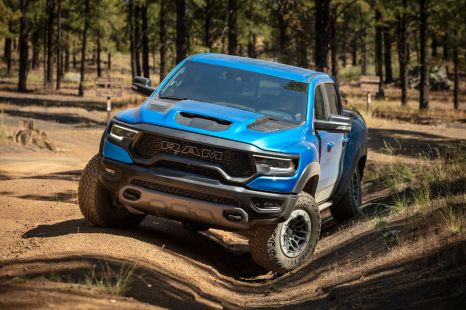

Derek Fung
Revived Ram 1500 TRX could debut on New Year's Day
2 Days Ago
The Chevrolet Silverado 1500 is refreshingly old-school in some ways, but with all the latest technology you'd expect in a full-sized pickup.
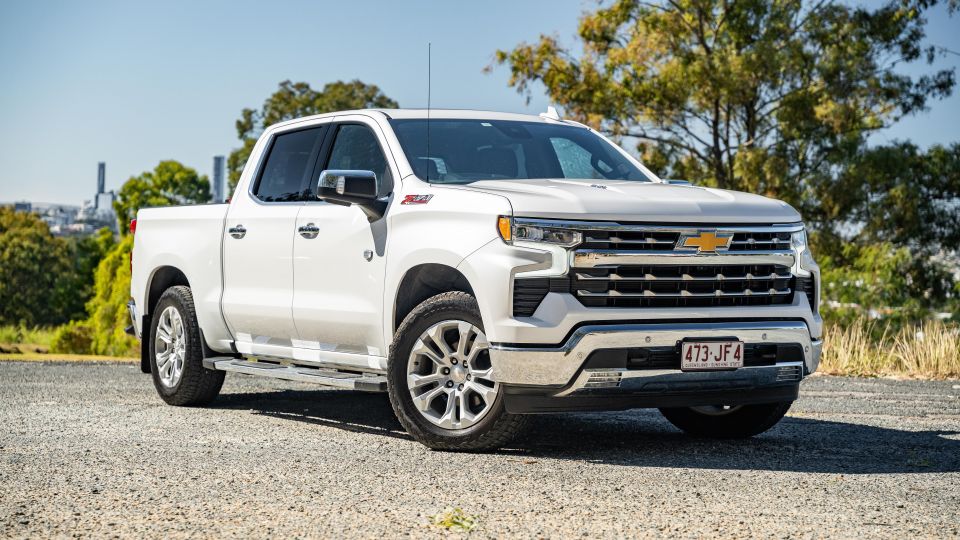
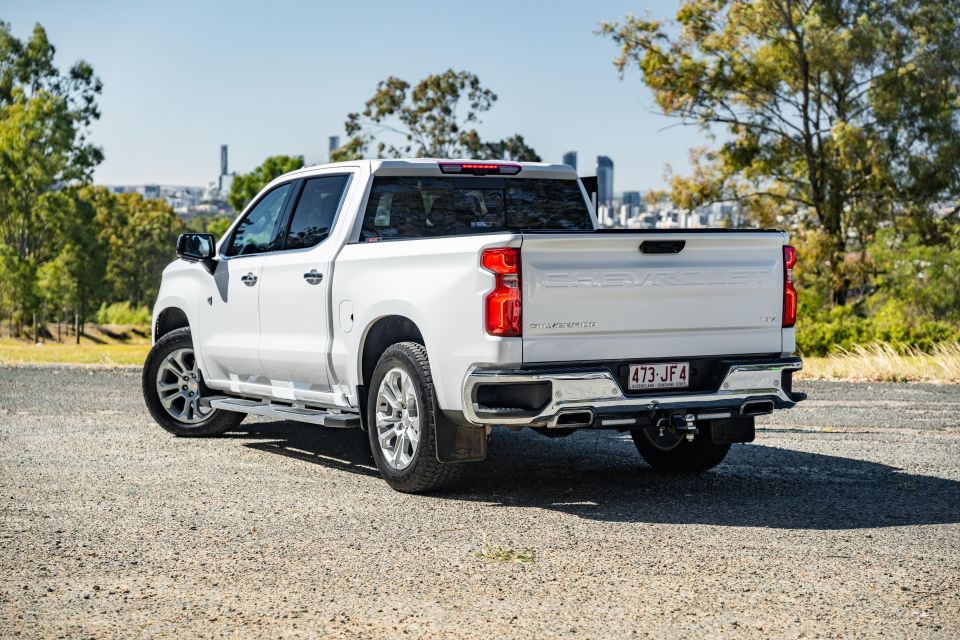

Quickly see how this car stacks up against its competition. Select any benchmark to see more details.
Where expert car reviews meet expert car buying – CarExpert gives you trusted advice, personalised service and real savings on your next new car.
If you go to an American restaurant, you want a big, greasy burger or ribs drenched in sauce, right?

Likewise, if you want a big American pickup truck, you want a V8.
At least that’s what a vocal contingent online seems to say. But as soon as next year, the Chevrolet Silverado could be the only factory-backed right-hand drive pickup available in Australia with a V8.
General Motors may be investing heavily in electric vehicles, but in 2023 it also announced it was pouring US$854 million (A$1.2 billion) into small-block V8 engine production.
Meanwhile, Ford doesn’t bring any V8-powered F-150s here (the V6s outsell them in the US, anyway), while the updated Ram 1500 is ditching its Hemi V8 for new Hurricane inline sixes and the more expensive Toyota Tundra comes only with a V6 hybrid powertrain.
WATCH: Paul’s video review of the 2024 Chevrolet Silverado 1500 ZR2
GM hasn’t ignored downsizing entirely. You can actually get the Silverado 1500 in the US with a 2.7-litre turbocharged four-cylinder petrol engine, but GM Specialty Vehicles (GMSV) has shown no desire to bring this here.
Not only that, but we get the larger of the two V8s offered in the Silverado 1500.
Following its 2023 facelift, GMSV offers only two highly specified variants in Australia, which are developed and remanufactured in right-hand drive by Walkinshaw Automotive Group.
In an increasingly competitive pickup truck segment, is the Silverado too old-school? Or is it exactly what local pickup truck buyers are after?
GM Specialty Vehicles has yet to confirm any pricing or specification changes for 2025.
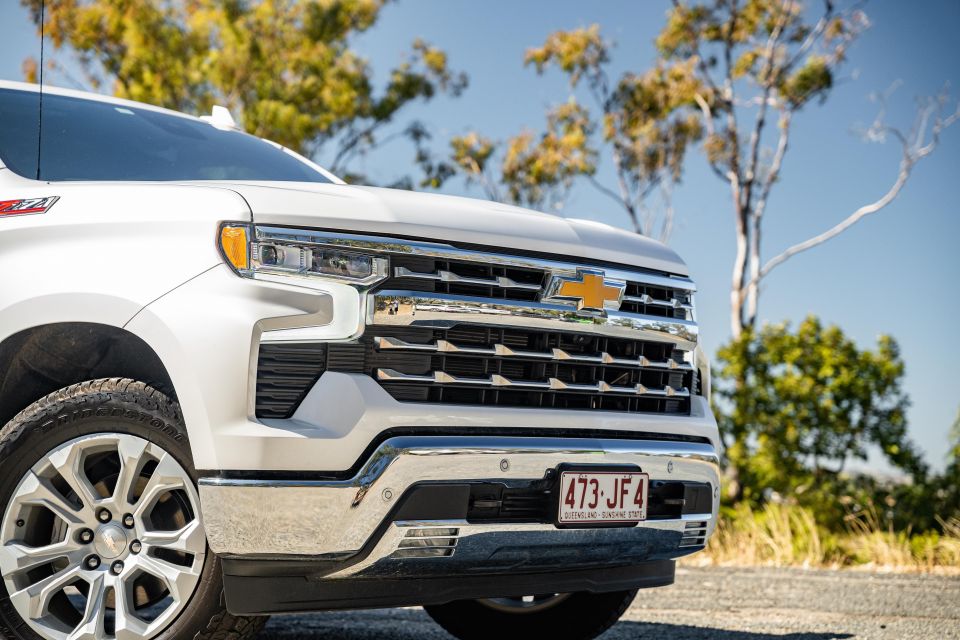
| Model | Price before on-road costs |
|---|---|
| Chevrolet Silverado 1500 LTZ Premium | $130,500 |
| Chevrolet Silverado 1500 ZR2 | $138,000 |
To see how the Silverado lines up against the competition, check out our comparison tool
Buy your new car without the stress. It's fast, simple and completely free.

Great service from Travis and team, second time I have used this business would not hesitate to recommend them to anyone
Craig C.
Purchased a Ford Ranger in Sunshine Coast, QLD
CarExpert helped Craig save thousands on his Ford Ranger, now let us save you on your next new car.
Find a dealChunky side steps allow you to easily clamber up into the Silverado, with grab handles on the A-pillars providing assistance.
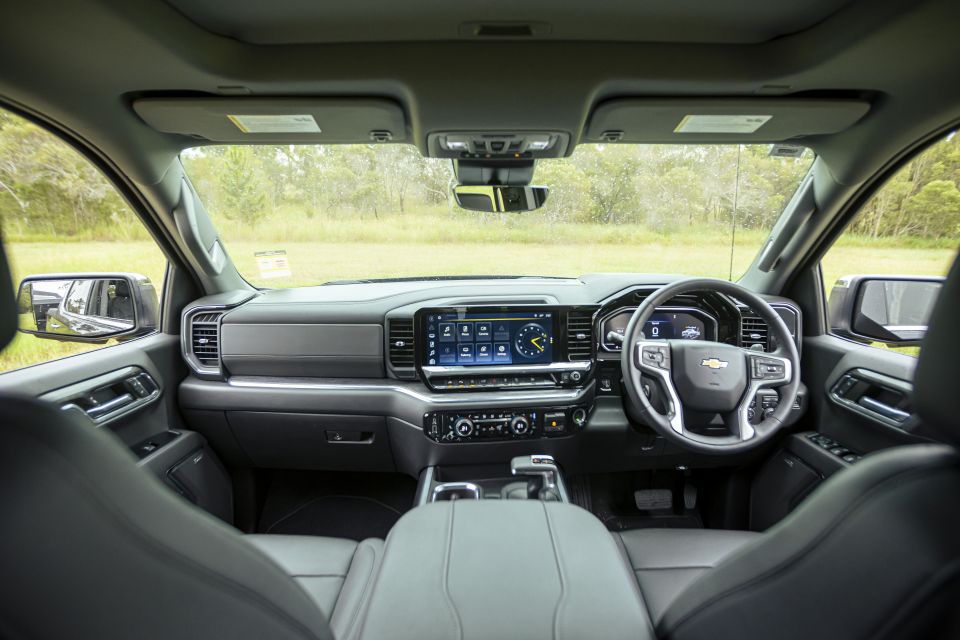
The doors feel a little light, and don’t close with quite as satisfying a thunk as rival pickups. There’s also a bit of a lag with the proximity entry at times.
Once you step inside though, you find an interior that’s well and truly on par with rivals in terms of design and material quality.
Soft-touch trim – complete with stitching details – is applied to much of the dashboard and doors, offsetting the hard plastic trim found on these items.
There’s a little bit of piano black trim, but it’s mercifully kept to areas you’re unlikely to touch, while metallic accents add some welcome contrast to what is a very black interior.
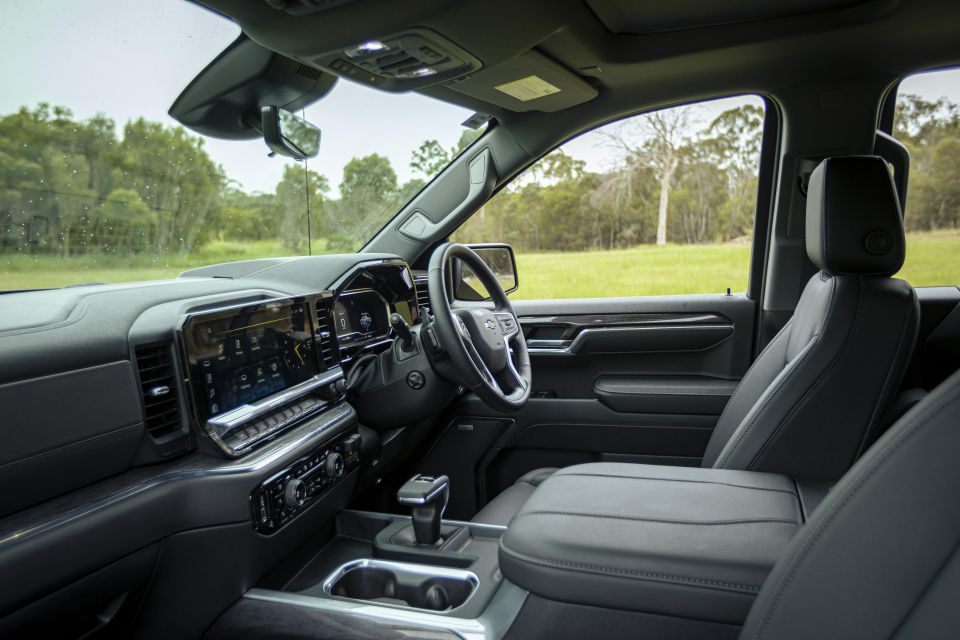
Alas, we don’t get the handsome grey interior offered in US-market LTZs; if you want a more colourful interior here, you’ll need to opt for the more off-road focused Silverado ZR2.
Around 10 years ago, GM in North America became obsessed with overly glossy-looking fake wood trim. In the Silverado, you’ll find this on the sides of the centre console and on the dash and doors. I personally don’t mind wood trim, but this stuff isn’t fooling anyone.
The Silverado thoughtfully turns on the heated steering wheel and seats upon startup if it detects it’s cold, or the ventilated seats if it’s hot. The heated steering wheel will eventually turn off, while the climatised seats will progress down the stages of intensity before switching off, too. It’s a clever and genuinely luxurious function we found impressive.
We like the way the LED interior lighting gradually illuminates the cabin, while the animation that plays across these screens upon startup has impressive graphics and sets the tone for a satisfying tech experience.
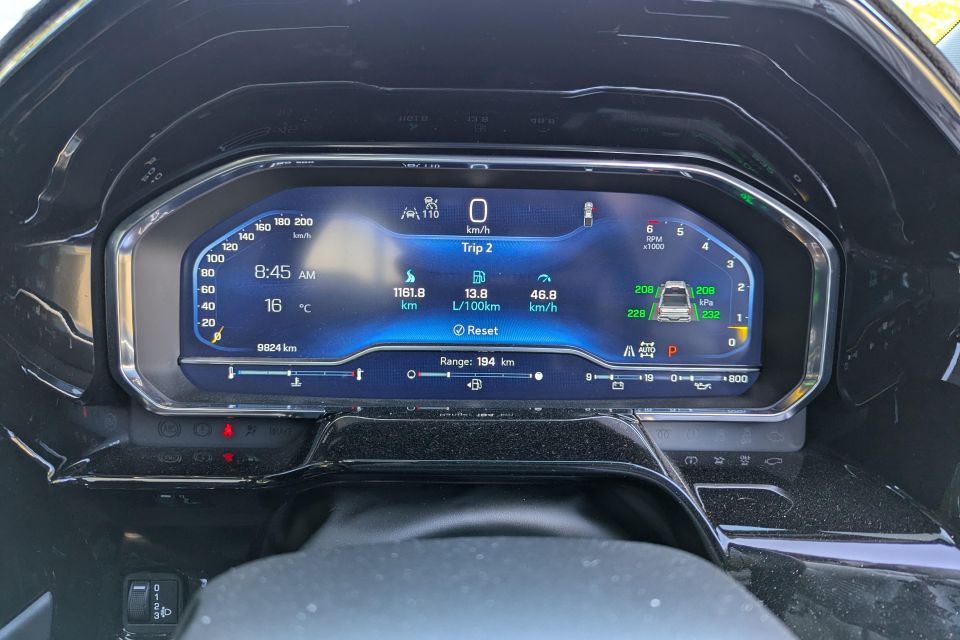
Other thoughtful touches include illuminated surrounds for the USB outlets and a button that drops all four power windows at once (though oddly, if you adjust them independently the rear windows don’t have an auto up function).
In addition to a more modern dashboard design, the Silverado also received a significant tech upgrade with its 2023 update, headlined by a larger 13.4-inch infotainment touchscreen and 12.3-inch digital instrument cluster.
There’s also a head-up display, which can be easily adjusted via buttons to the right of the steering wheel.
Chevrolet’s latest generation of infotainment system has an attractive user interface and is easy to navigate.
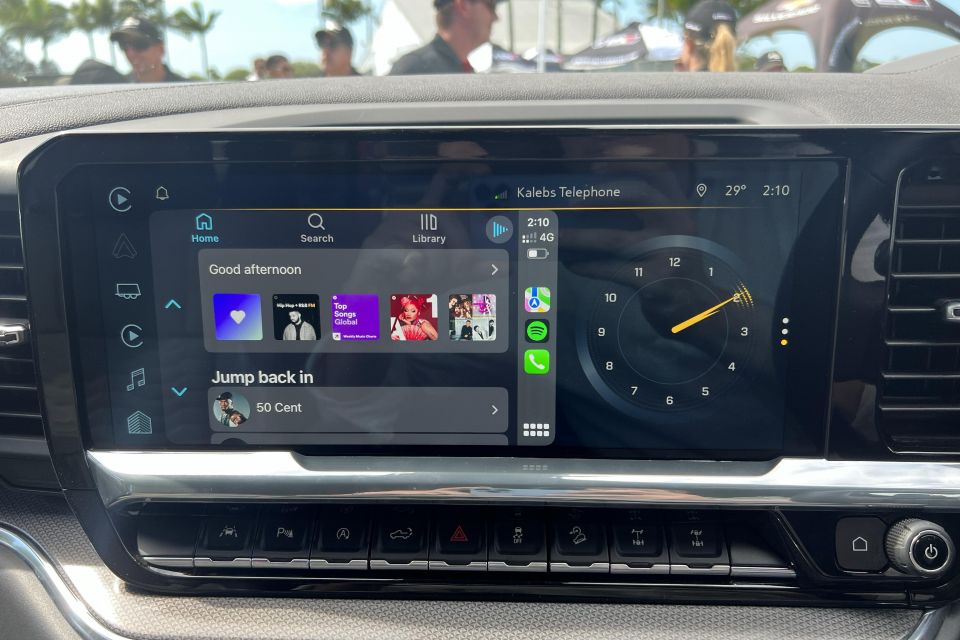
Apple CarPlay and Android Auto connect wirelessly, and the latter booted up quickly and worked reliably every time I drove the Silverado.
Our only gripe is with the anchored menu bar on the left-hand side of the screen, which features rather abstract designs for the buttons. The music and trailering buttons are easy to figure out, but the others look more like pieces in a Cadbury Snack block.
The digital instrument cluster is logically laid out and attractive. There are simulated analogue gauges which contain information within them, as well as a central information portion which can be toggled between different modes.
The time and temperature are always easy to read, and overall the display doesn’t appear too cluttered despite all the information available.
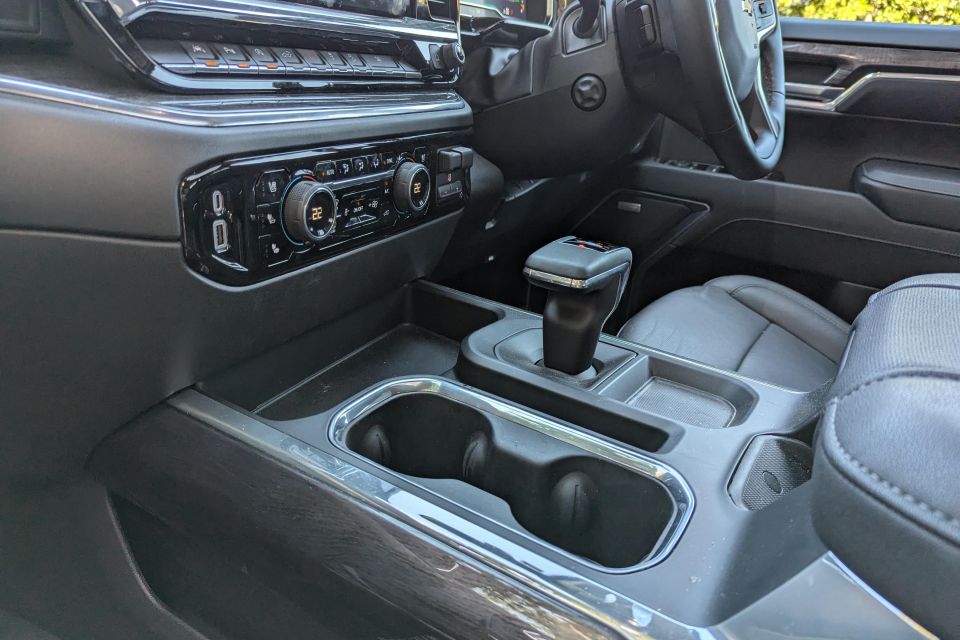
The angled wireless charging pad also has one of the better designs out there, with phones staying securely in place. It worked reliably for us.
There’s plenty of physical switchgear in the Silverado, with a row of buttons below the infotainment touchscreen – including one to deactivate the lane-keep assist – plus a climate control array with a pair of knobs for temperature adjustment.
You get a USB-A outlet in the spacious centre console bin, plus another alongside a USB-C outlet on the centre stack.
Other storage includes a big shelf at the base of the centre stack, nooks on top of and on the sides of the centre console, a nook behind the touchscreen, and large cupholders and bottle holders. In short, there’s plenty of space for your stuff.
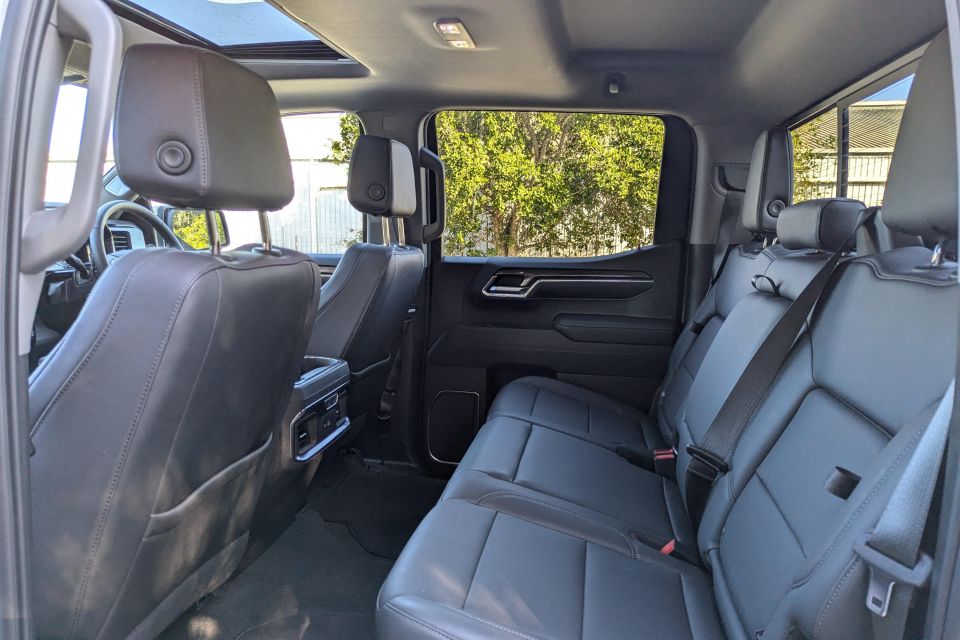
The steering wheel feels good, though it may take some adjustment to get used to the volume and skip track buttons being on the rear of the wheel instead of on the front.
As expected of an American pickup truck, the rear of the cabin is palatial with a big, comfortable bench that can comfortably fit adults siting three abreast, as well as a completely flat floor.
The front seatbacks are soft and feature map pockets, while other amenities include outboard heated seats, air vents, and a USB-A outlet and a USB-C outlet. A pair of cupholders can also be found at the rear of the centre console, while there are bottle holders in the doors.
While it looks like there’s an indentation in the roof for a second sunroof, no such feature is offered. That means only front-seat occupants get to enjoy some light from above.
It’s easy to get up into the tub as Chevrolet has helpfully included steps in the rear bumper, much like those of the Ford Ranger. It’s a simpler solution than the rival F-150’s elaborate fold-down steps and lift-up support pole.
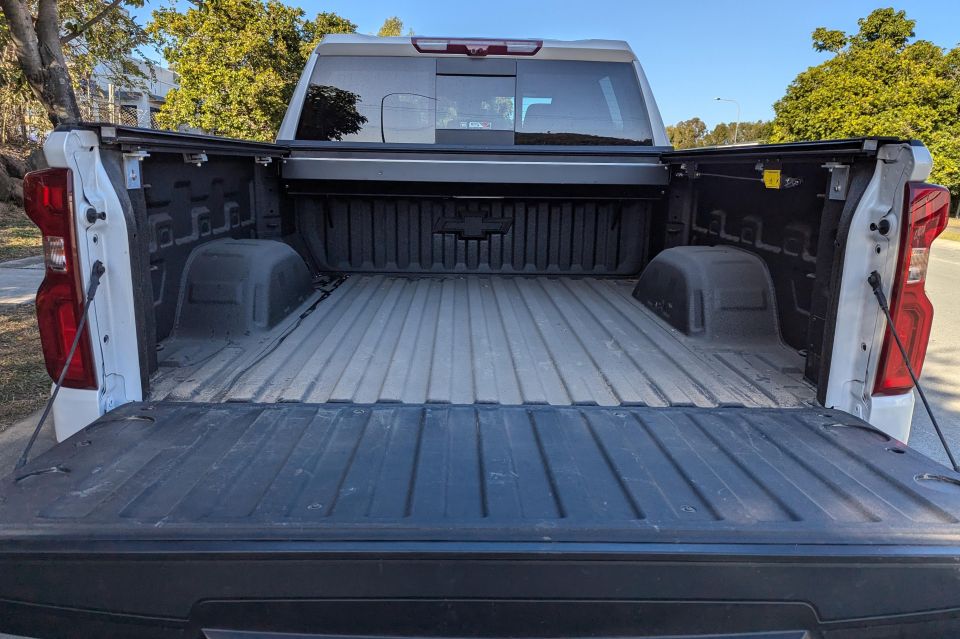
| Tub dimensions | Chevrolet Silverado 1500 LTZ |
|---|---|
| Length | 1776mm (1400mm from roller shutter) |
| Width | 1813mm |
| Width between wheel arches | 1286mm |
| Depth | 569mm |
| Cargo volume | 1781L |
To see how the Silverado lines up against the competition, check out our comparison tool
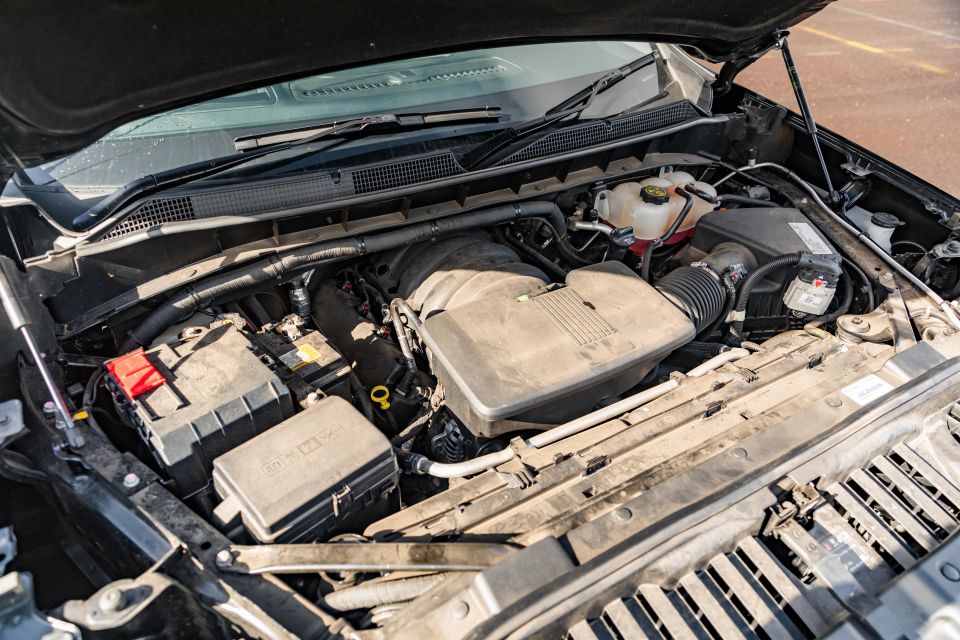
| Specifications | Chevrolet Silverado 1500 LTZ Premium |
|---|---|
| Engine | 6.2L naturally aspirated petrol V8 |
| Power | 313kW |
| Torque | 624Nm |
| Transmission | 10-speed auto |
| Drive type | Full-time four-wheel drive Auto locking rear differential Selectable low-range gearing |
| Fuel economy (claimed) | 12.9L/100km |
| Fuel economy (as tested) | 12.9L/100km (inner-city, suburban and highway loop) 13.8L/100km (over the course of a week) |
| Fuel tank | 91 litres |
| Fuel type | 91 RON regular unleaded |
| Weight | 2552kg (kerb) 2494kg (tare) |
| Payload | 748kg |
| Braked towing capacity | 4500kg |
| Gross vehicle mass (GVM) | 3300kg |
| Gross combined mass (GCM) | 7160kg |
To see how the Silverado lines up against the competition, check out our comparison tool
The Silverado 1500, like its arch-rivals, is plush and comfortable.
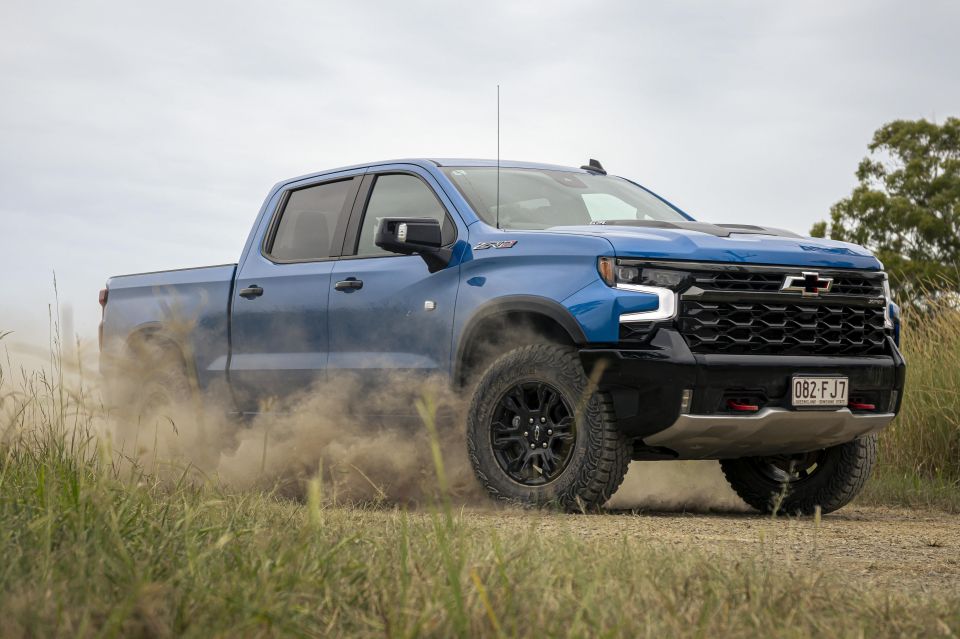
If you want to eat up the kilometres on the open road, whether you’re heading to Wagga Wagga or Wyoming, you can’t go wrong with the Silverado.
Sure, it feels like if you were to bust open the suspension components melted marshmallow would flow out like a s’more, but while it’s very softly sprung it won’t make you nauseous.
The ride is so absorbent you occasionally forget you’re driving a body-on-frame vehicle, but occasionally on some poorly surfaced roads you can feel the (unladen) Silverado fidget a little at the rear with its live axle.
Impacts are muffled, though the Silverado does bounce around a bit on some rural roads and can be jostled by expansion joints. It also was slightly upset by concrete highways.
We simultaneously had the Silverado 1500 with a Nissan Patrol, however, and though these aren’t direct rivals and the Japanese off-roader is quite a bit older, we found the Chevy to be at the next level when it came to ride comfort.
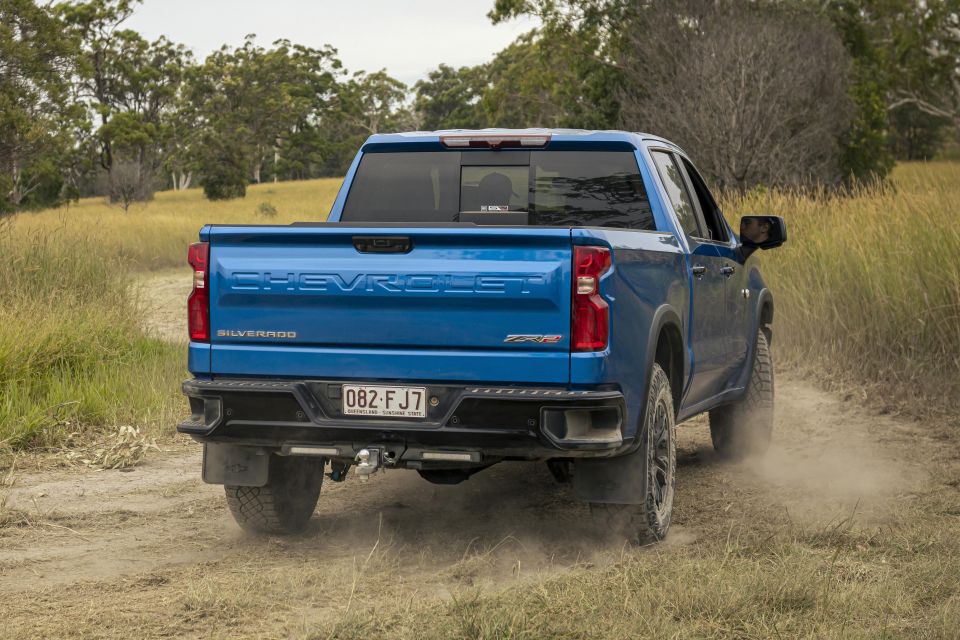
As for handling, there’s naturally body roll in corners, but that’s par for the course for a big pickup.
Much as the ride is even more softly sprung than an F-150, the steering also feels a bit slower, heavier and vaguer than the Ford. This makes the Chevy feel somewhat more ponderous to drive, but we did get used to it quickly.
You can still drive one-handed, with the door card wide enough to rest your arm on as you point the big pickup towards the horizon. The Silverado also doesn’t feel too difficult to park, while that massive antenna up front is a helpful reminder if a carpark is too low for the vehicle. The mirrors also helpfully tip down when you put it in reverse.
At highway speeds there’s little wind noise despite the blocky body and big mirrors, though you’ll hear a little of what sounds like intake noise.
Where the F-150’s engine is extremely hushed, the Silverado’s V8 is more vocal. That’s not necessarily a bad thing – who doesn’t love the sound of a V8? – but it means the Silverado is a bit noisy under full throttle.
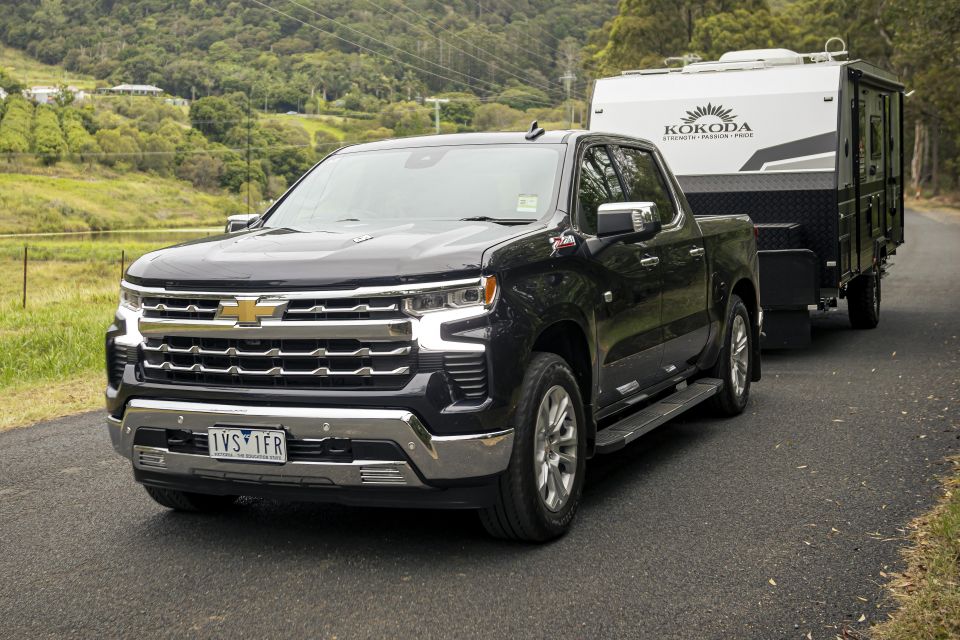
Where expert car reviews meet expert car buying – CarExpert gives you trusted advice, personalised service and real savings on your next new car.
The Silverado is refined at idle, and there’s an automatic stop/start system that will cut power completely for the sake of efficiency. This polarising feature is easy to turn off.
The chintzy column shifter of the pre-update model has been axed in favour of a console-mounted one.
There are plasticky paddle shifters behind the steering wheel, but these only work when you push the shifter into Low mode and in turn lock you to a highest gear.
You can’t manually shift through all 10 gears like you can in most other vehicles, though the transmission generally goes about its business without much fuss anyway, apart from the occasional clunky shift we experienced when slowing to a halt.
There’s no auto hold function, which is a bit disappointing. There’s also no traffic sign recognition.
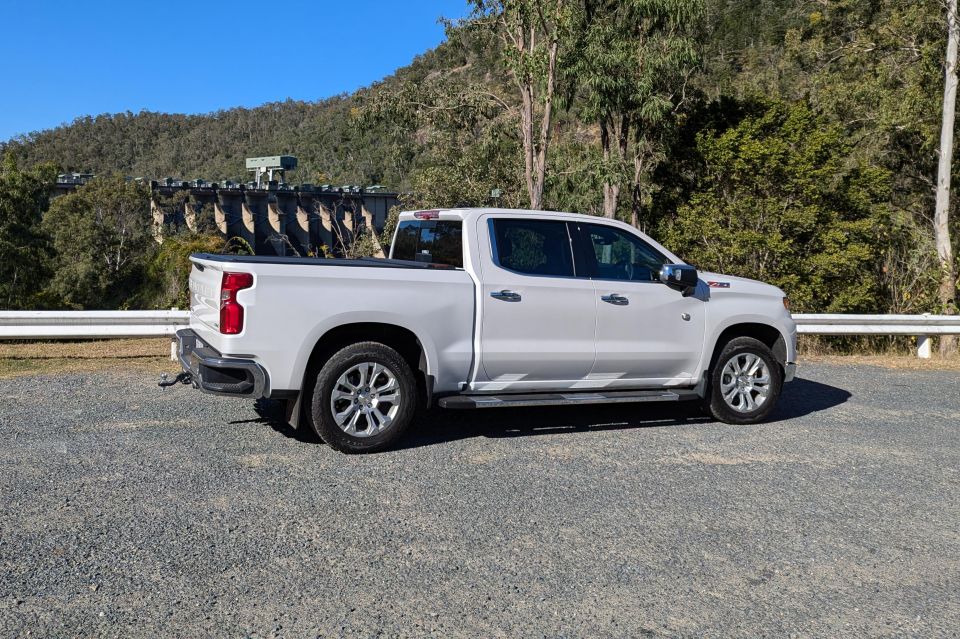
While the Silverado doesn’t have a lane centring function, the lane-keep assist is quite good at giving you a gentle nudge to keep you within your lane. On narrow country roads, however, it proved a bit too intrusive and we switched it off.
The car will vibrate your seat if it detects you crossing a lane marking or changing lanes into another vehicle’s path, which is a great way to warn you without alarming your passengers.
The forward collision warning was quite good at detecting pedestrians, for example when they were standing on the very edge of the road. If the Silverado detects a potential collision, a warning will flash up in the head-up display.
The adaptive cruise control works well, and you can also just use normal cruise control. While you can either adjust in 1km/h or 5km/h increments, the latter doesn’t round up so, for example, you go from 72 to 77 to 82km/h.
The camera quality is excellent, and there’s also a underbody view which is handy if you’re tackling any trails. Weirdly, if you turn on the camera view it will stay on at high speeds instead of cutting out at around 20km/h like most cars.
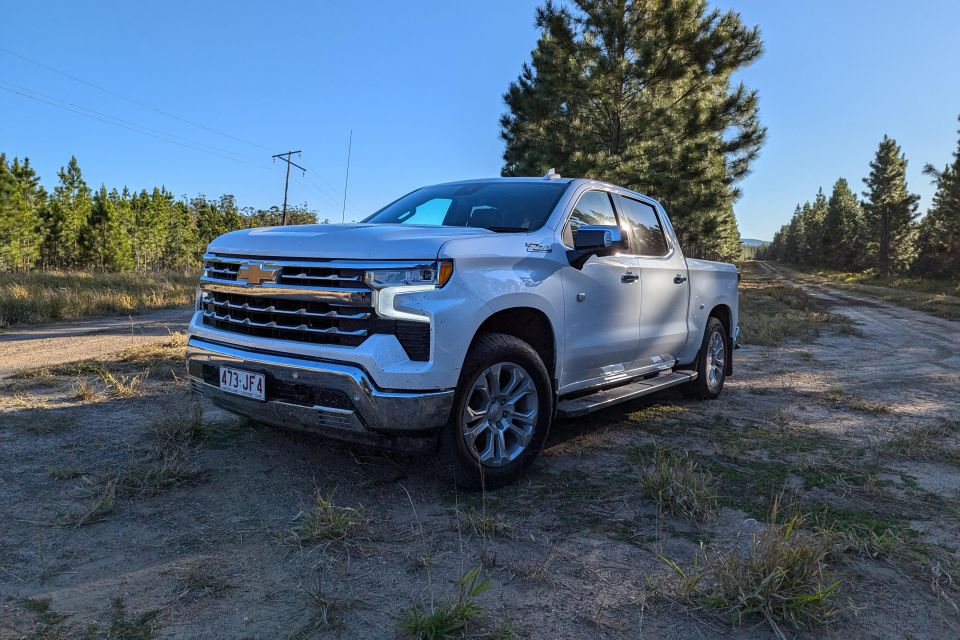
We drove the Silverado predominantly in rear-wheel drive mode, though there’s a full-time four-wheel drive mode plus selectable 4H and 4L modes for off-roading.
We achieved 12.9L/100m over a loop consisting of inner-city, suburban and highway driving, matching the official claim.
While traffic conditions varied slightly, over an identical driving loop we achieved 13.8L/100km in a Ram 1500 and 13.9L/100km in an F-150. Their official claims are 12.2L/100km and 12.5L/100km, respectively.
Not only was the Silverado more efficient on this loop despite packing a V8 (unlike the Ford) and no mild-hybrid technology (unlike the Ram), with recorded consumption of 13.8L/100km over a week of driving it even achieved better fuel economy than the Ram and almost matched the Ford.
The caveat here is that unlike over our loop, we didn’t take all three pickups across the same exact routes and for the same overall distance. Nevertheless, we achieved 13.4L/100km in the Ford and 15.3L/100km in the Ram.
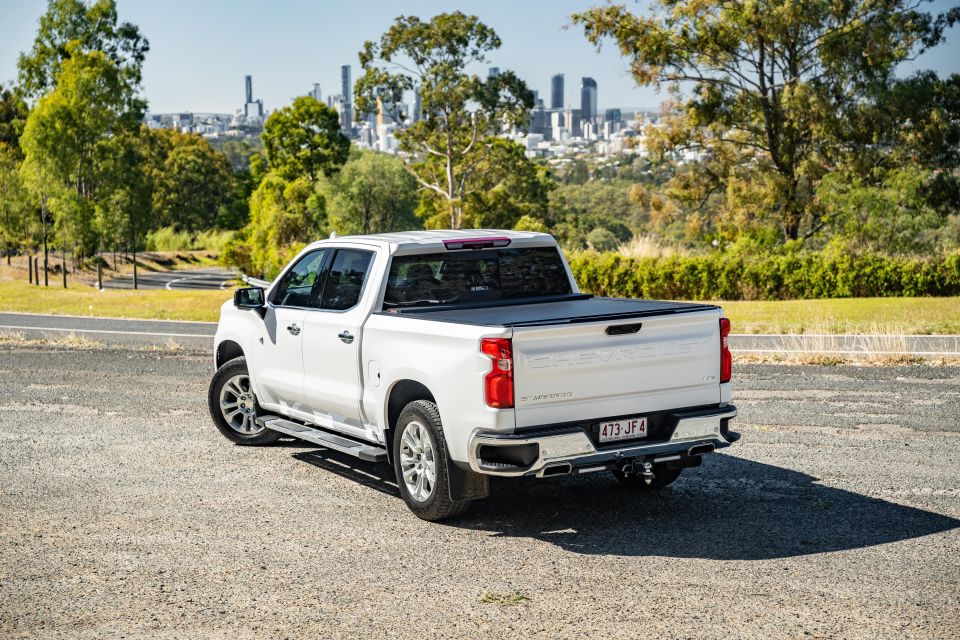
Impressively, we saw fuel economy of under 10L/100km on our first highway drive.
While we didn’t tow anything with our tester, we know from previous experience this is a capable tow vehicle.
In addition to a dedicated tow mode, there are also handy features aimed at making towing easier.
These include a function that cycles through the indicators and lights, another one that warns if you’re approaching your maximum GCM, and a checklist to make sure owners have set things up correctly.
| Off-road dimensions | Chevrolet Silverado 1500 LTZ Premium |
|---|---|
| Ground clearance | 228mm (unladen) |
| Approach angle | 21 degrees |
| Departure angle | 21 degrees |
| Ramp breakover angle | 20 degrees |
To see how the Silverado lines up against the competition, check out our comparison tool
While there’s a much wider range of Silverado 1500s available in the US, just two variants are offered here.
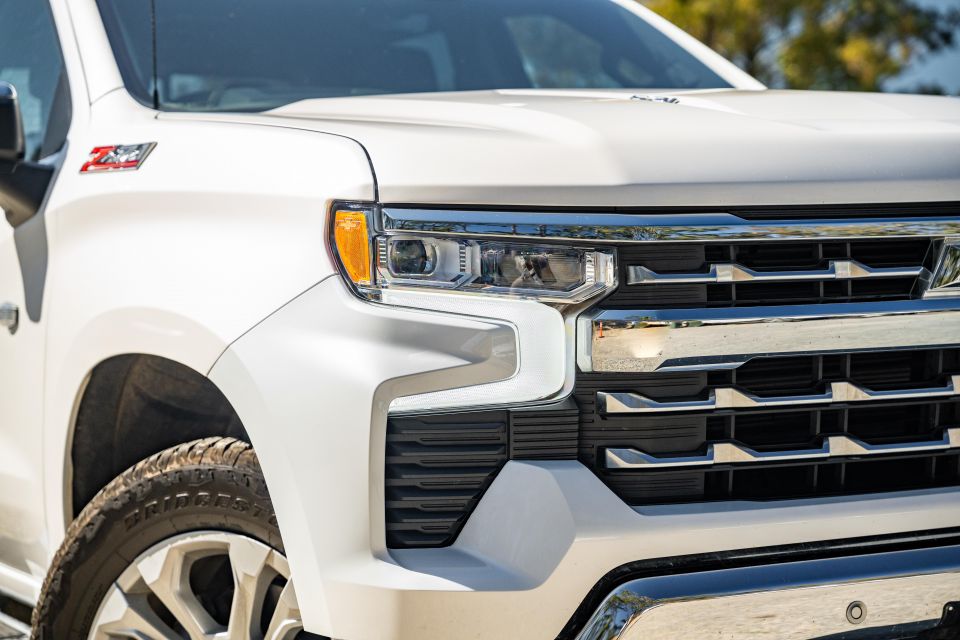

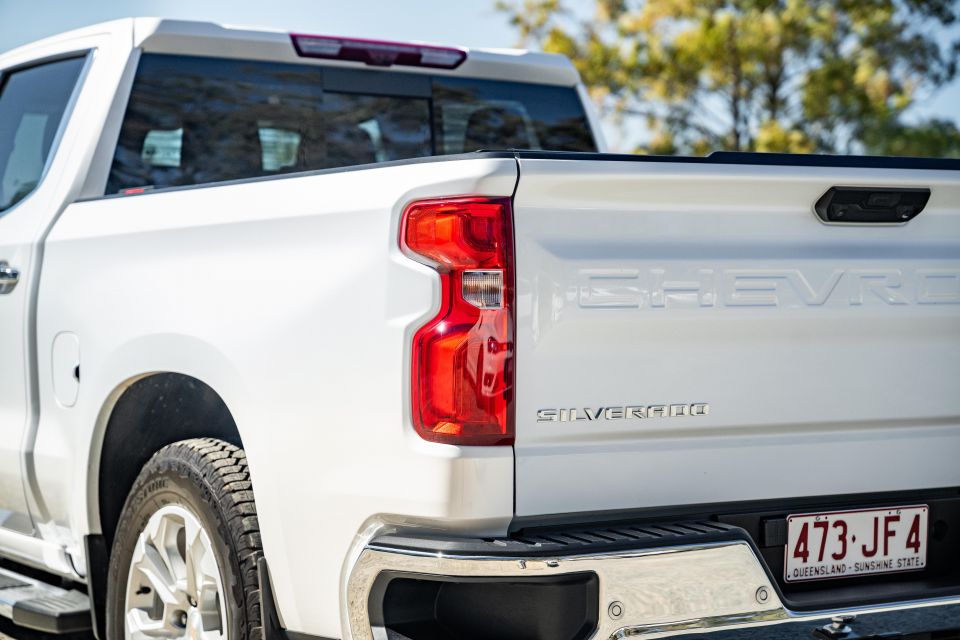

Silverado 1500 LTZ Premium equipment highlights:
Silverado 1500 ZR2 adds:
None of these big pickup trucks have been crash-tested by ANCAP, and there’s no Euro NCAP rating the Australian safety authority can rely on either.
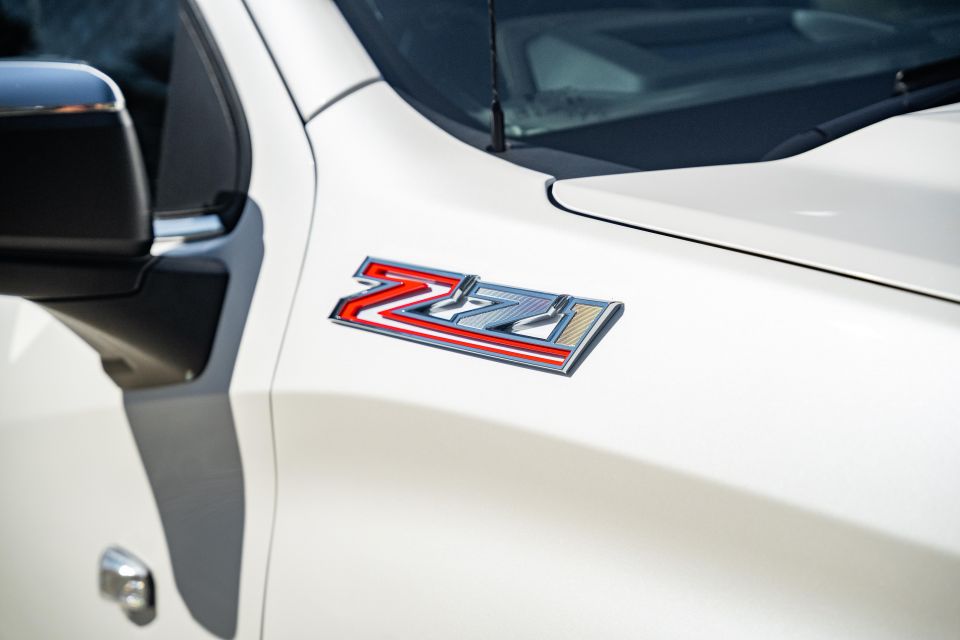
The current Silverado did, however, receive an overall ‘Good’ rating from the US Insurance Institute for Highway Safety.
Standard safety equipment across the range includes:
As with the Ram 1500 – but unlike the Ford F-150 and Toyota Tundra – there’s no capped-price servicing program for the GMSV Silverado.
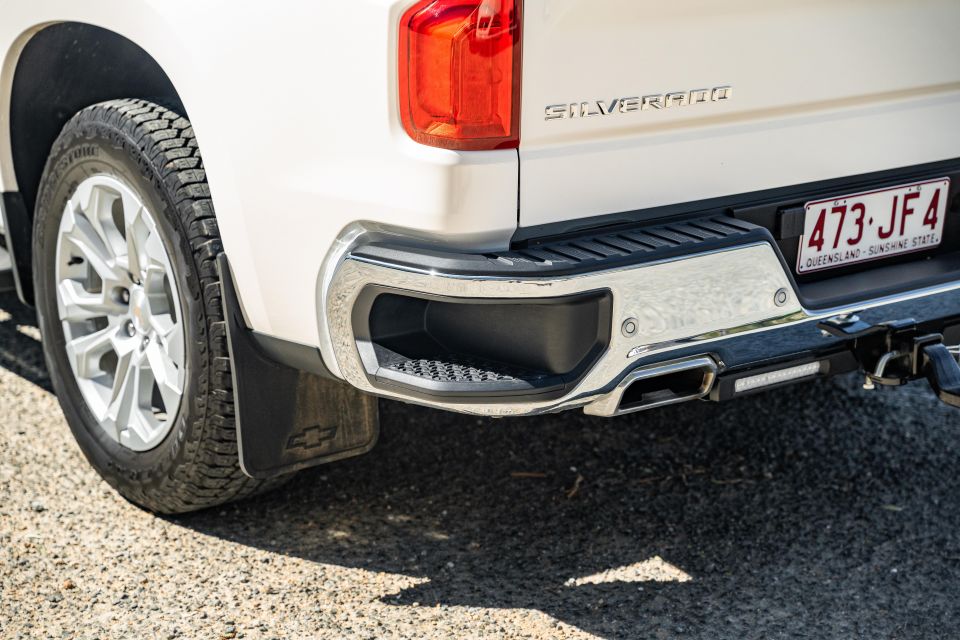
Service intervals are 12 months or 12,000km (whichever comes first), matching the Ram and (almost) the Ford, which has 12-month/15,000km intervals. It betters the Tundra’s six-month/10,000km intervals.
Also like the Ram 1500, the warranty is mediocre at three years or 100,000km (whichever comes first), while the Ford and Toyota are backed by a five-year, unlimited-kilometre guarantee.
The Silverado 1500 takes a more old-fashioned approach to the classic American pickup, sticking with a naturally aspirated V8 instead of downsizing or adopting any electrification.
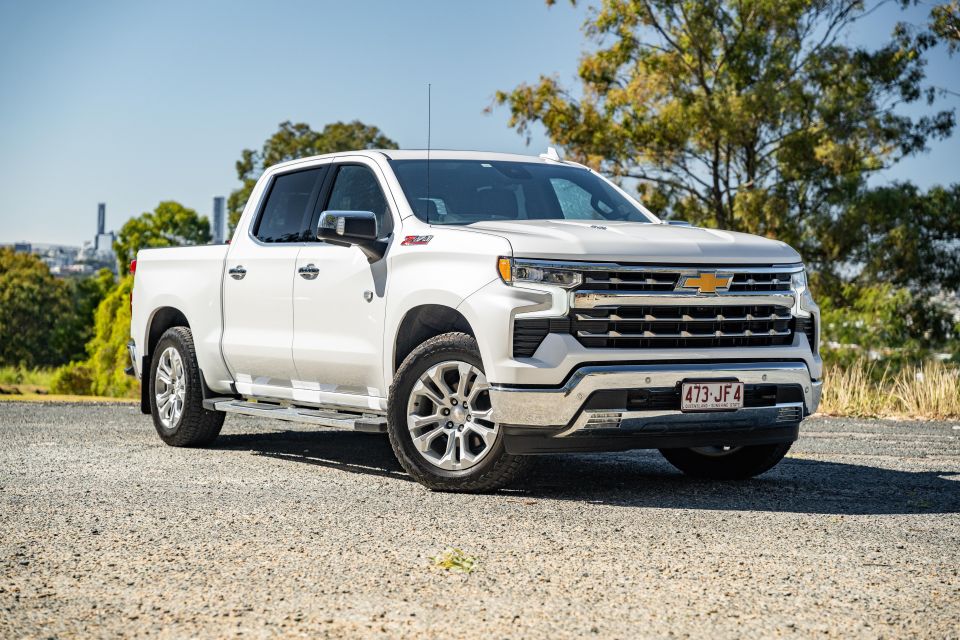
Despite this, it’s really no less efficient than its arch rivals, while still boasting the V8 sound and grunt that we suspect many American pickup buyers will want.
The recent update has brought a much classier interior, while the Silverado still has a roomy cabin and a cushy ride. The in-car tech is also pretty slick.
It does feel a bit more ponderous than a Ford F-150 with its slower steering and softer ride, while its aftersales package isn’t as generous.
Nevertheless, it makes a strong case for itself in what’s becoming an increasingly competitive segment – and not just because it’ll soon be the only V8 on offer.
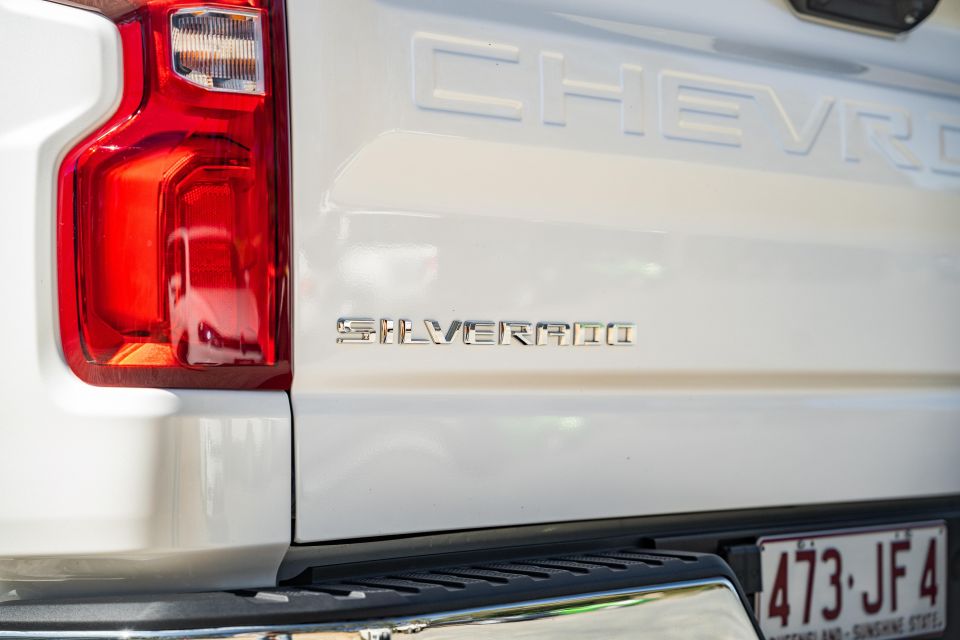
Interested in buying a Chevrolet Silverado? Get in touch with one of CarExpert’s trusted dealers here
Click the images for the full gallery
Where expert car reviews meet expert car buying – CarExpert gives you trusted advice, personalised service and real savings on your next new car.
William Stopford is an automotive journalist with a passion for mainstream cars, automotive history and overseas auto markets.


Derek Fung
2 Days Ago
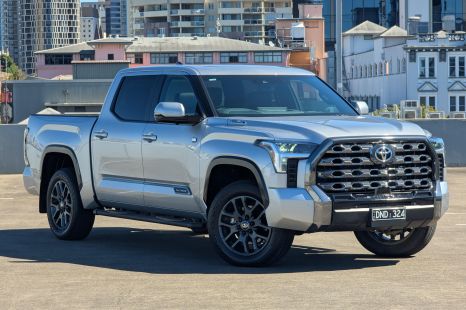

Damion Smy
5 Days Ago
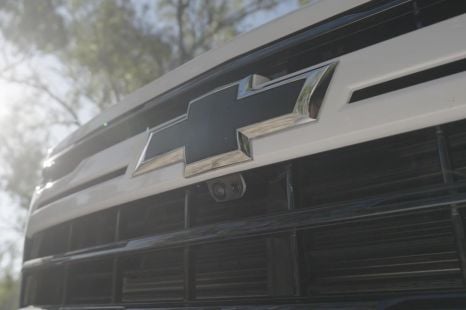

Ben Zachariah
7 Days Ago


James Wong
13 Days Ago
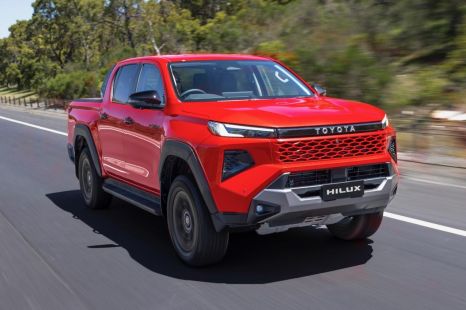

Ben Zachariah
13 Days Ago
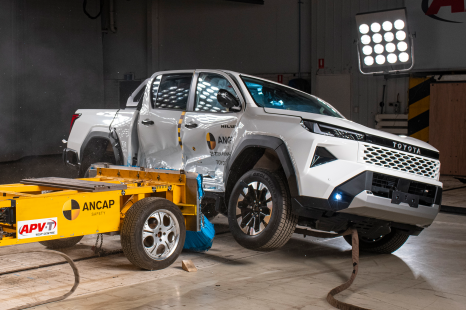

William Stopford
14 Days Ago